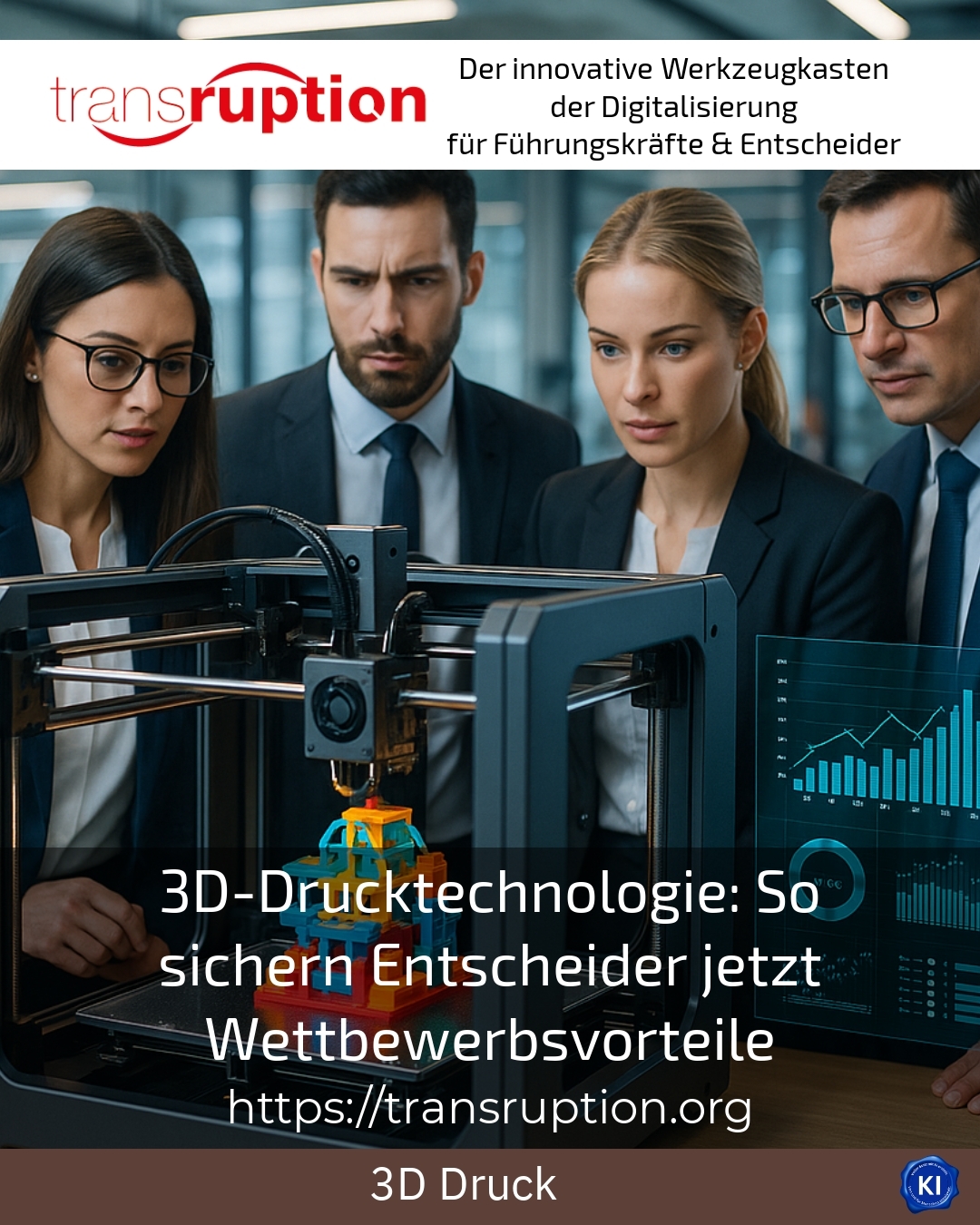The use of modern production methods such as 3D printing technology opens up a wide range of opportunities for decision-makers to position themselves better against the competition. This technology helps companies to speed up processes, reduce costs and respond more flexibly to customer requirements. Particularly in industries with high innovation requirements or individual customer needs, 3D printing technology is proving to be a valuable source of inspiration for new business models and sustainable competitive advantages.
Flexibility and customisation through 3D printing technology
One of the outstanding strengths of 3D printing technology lies in the high degree of customisability of products. This allows companies to realise components and designs individually and often in small batches or one-off productions. Medical technology providers, for example, benefit from being able to customise prostheses and implants precisely to the patient. In the jewellery or consumer goods sector, the use of personalised objects enables close customer loyalty.
The advantage is also evident in the logistics sector: spare parts can be printed directly at the point of use. This significantly reduces storage costs and procurement times. In the trade sector, seasonally varying small batches or limited editions create new sources of income. At the same time, this versatility ensures that companies can react more quickly to changing market conditions.
BEST PRACTICE for the customer (name withheld due to NDA agreement) A leading manufacturer of specialised machinery used 3D printing technology to provide spare parts directly to customer sites. This minimised downtimes and significantly increased customer satisfaction.
Rapid prototyping for accelerated product development
The accelerated production of prototypes is one of the key benefits of this technology. Companies can create, test and customise product samples much faster. This process significantly shortens the time-to-market, which benefits young companies and SMEs in particular. They save on the costs of expensive moulds that would be necessary with traditional methods and can implement design changes at short notice.
For example, a medium-sized mechanical engineering company was able to use 3D printing technology to produce functional prototypes within just a few days, allowing technical errors to be recognised early on. This led to a market launch that was weeks ahead of the competition.
Economic benefits and process optimisation
Companies use additive manufacturing to optimise costs by producing complex components without the expense of mould making. This creates essential economic advantages, especially for small batch sizes or a wide range of variants. In addition, the combination of several components in a single printed part enables new design approaches that reduce weight and assembly times.
Industries such as mechanical and plant engineering also benefit from the elimination of set-up times and a more flexible supply chain. Printing on demand avoids overstocking and allows production capacities to be planned more efficiently.
BEST PRACTICE at the customer (name concealed due to NDA contract) In toolmaking, a customer was able to adapt production lines to new products more quickly using 3D-printed fixtures and at the same time reduce the cost of fixed tools. This flexibility made it possible to react quickly to fluctuations in demand.
New business models through 3D printing technology
3D printing technology has long been a driving force not only in production, but also opens up opportunities for innovative services. For example, customer wishes can be individually recorded and precisely realised through data-based production. Digital marketplaces connect producers, designers and end customers for new forms of cooperation.
Craft businesses in particular are already using the technology to tap into new customer groups with limited collector's items or changing product series and to position themselves as regional pioneers.
BEST PRACTICE at the customer (name concealed due to NDA contract) An SME from the jewellery sector established an exclusive product line with customer-specific designs that are manufactured using 3D printing. This strengthened customer loyalty and differentiated
















